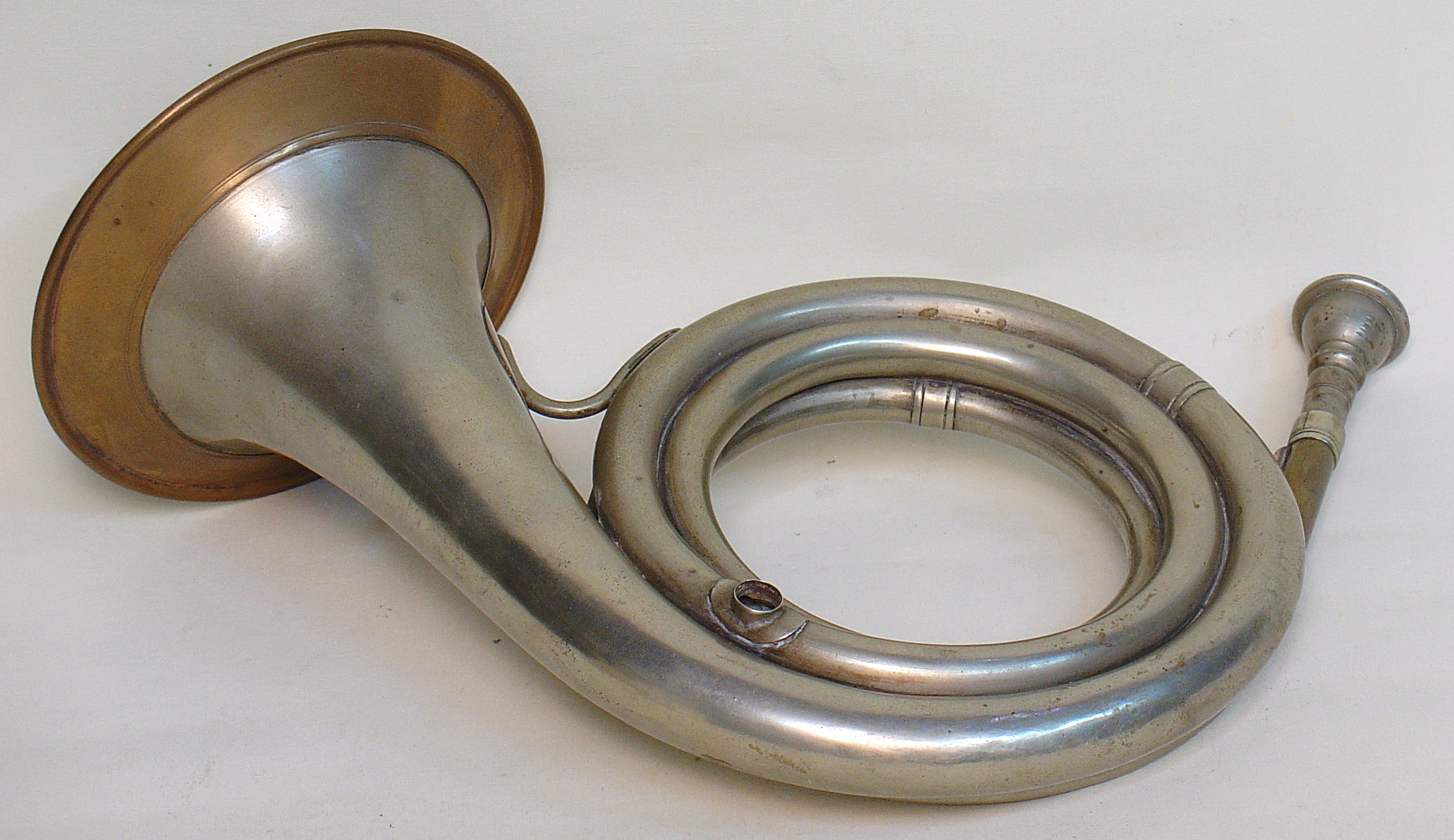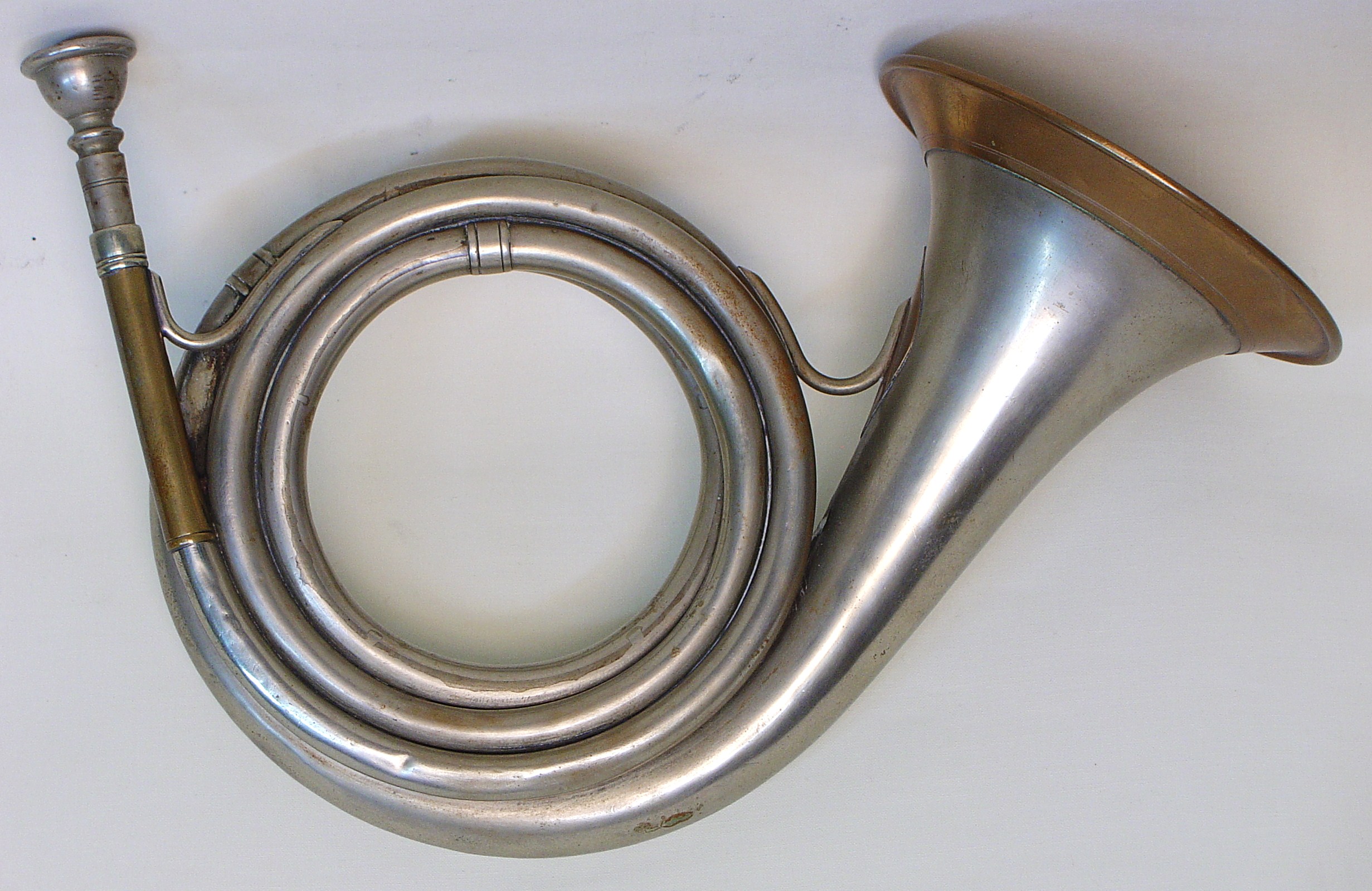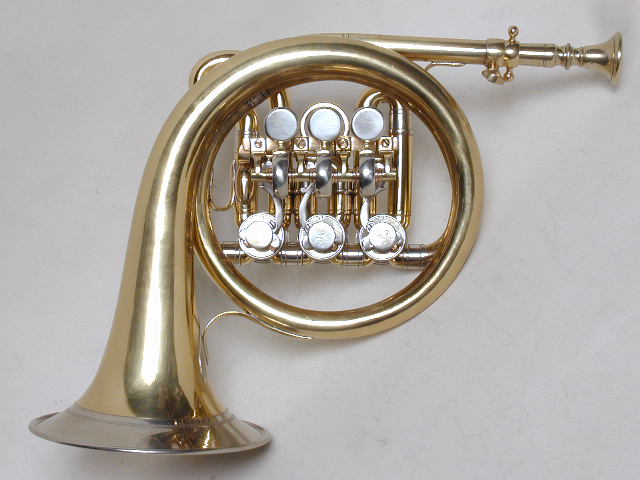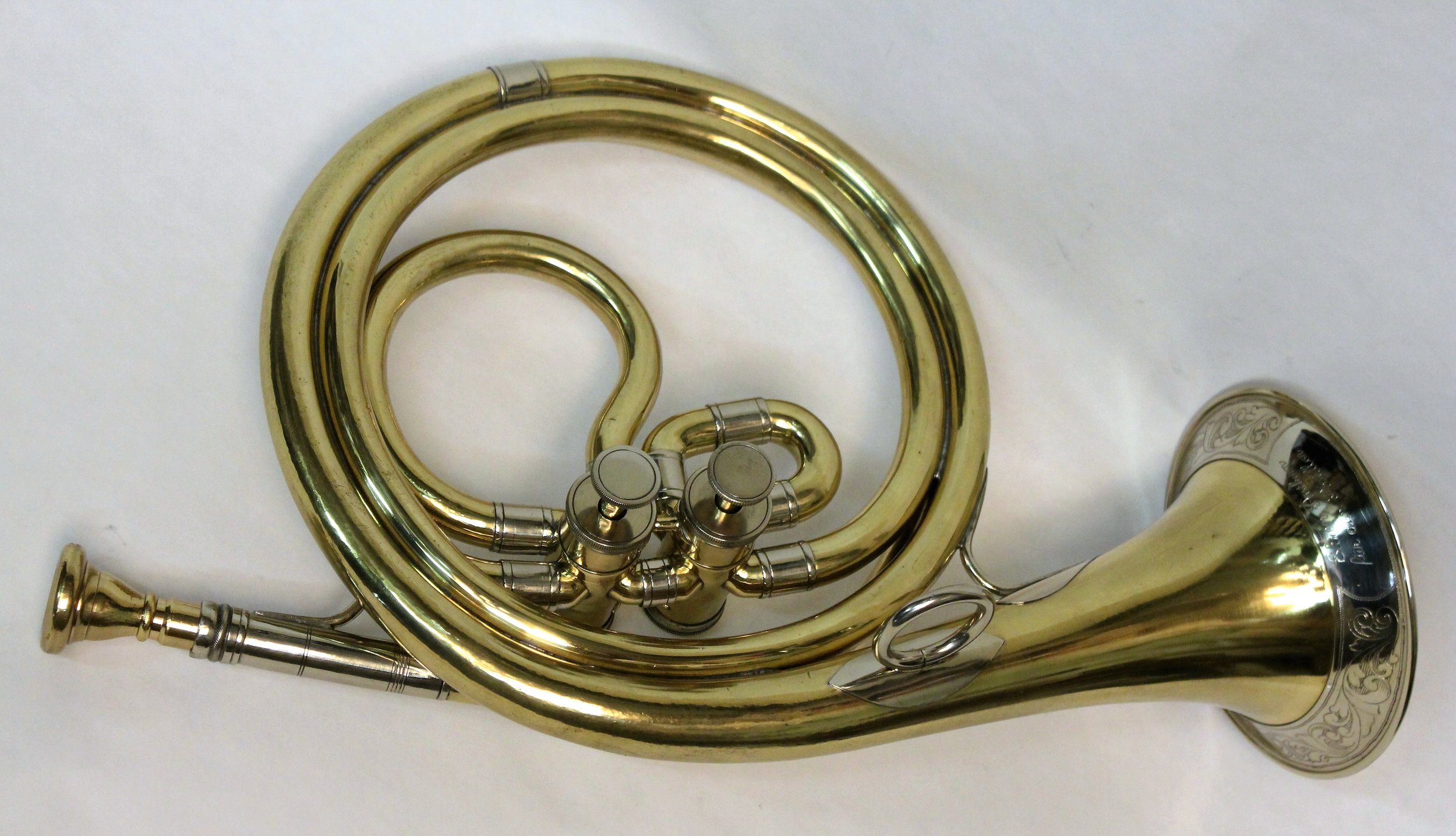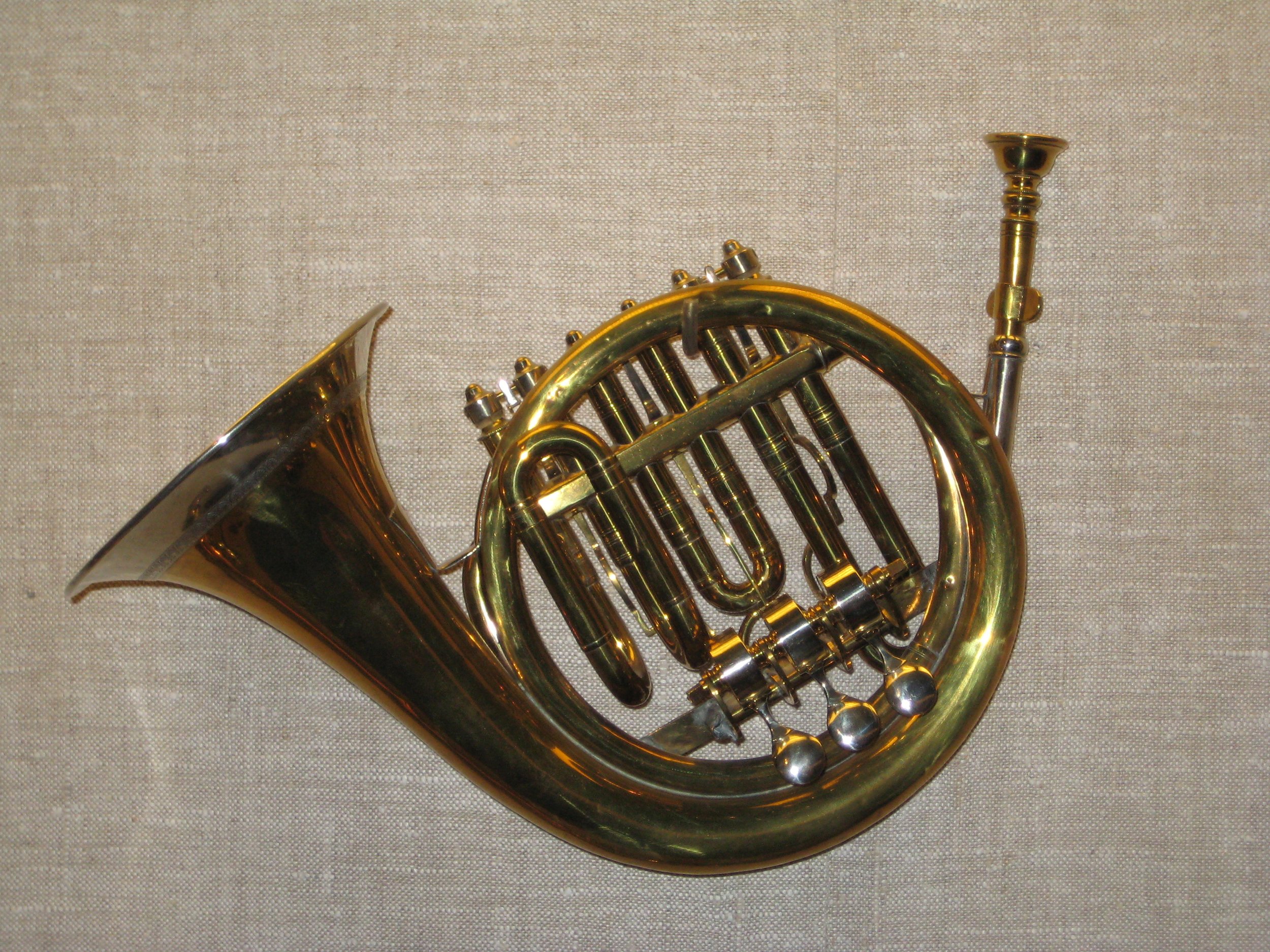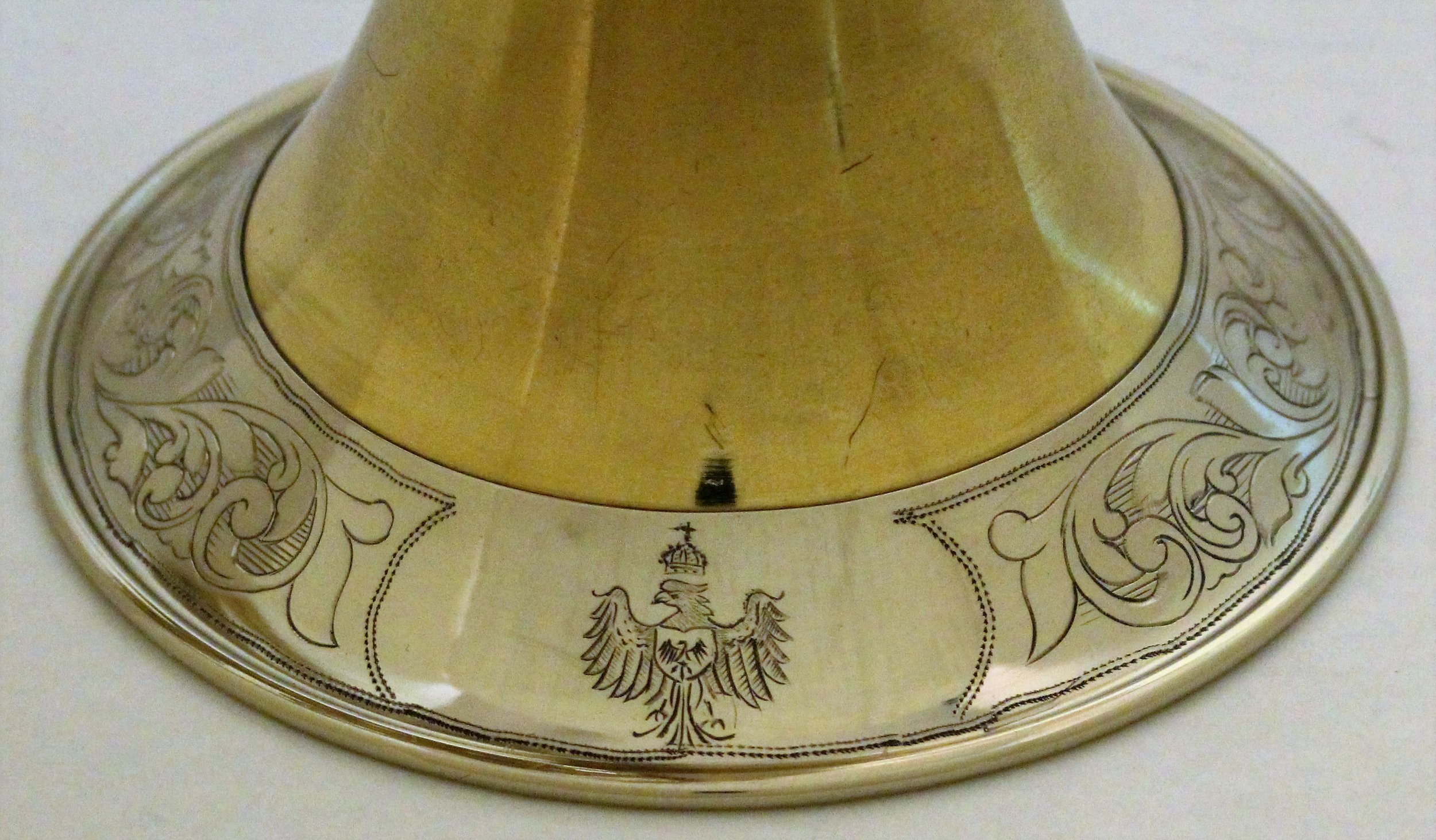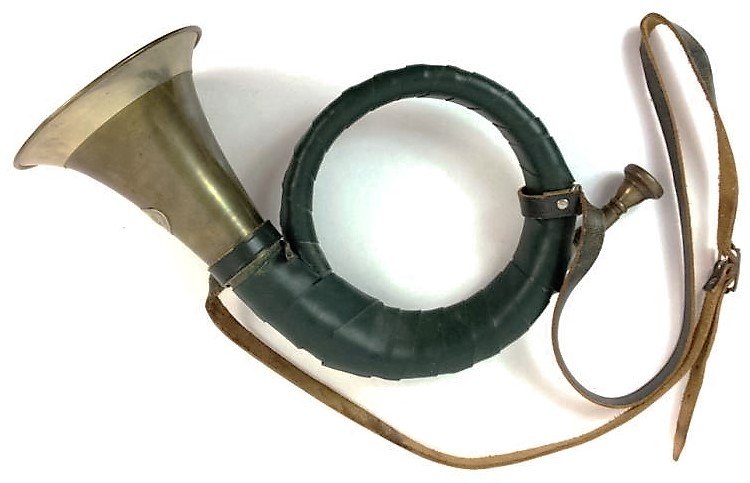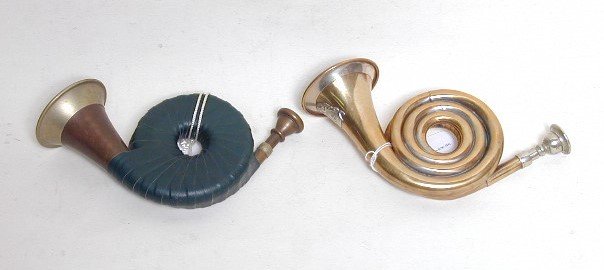German, Austrian and Prussian Post Horns
Signal horns are well known in many ancient cultures and are known to have been used in Roman times to announce the arrival of the emperor's messengers. The European tradition of regular postal coaches was firmly established during and after the 16th century. By the late 18th century, the German Post horn was standardized in this shape and pitched somewhere near modern Bb. The calls required just two or three tones but the desire to become more musical resulted in a longer tube pitched in F or Eb, often with a transposing finger hole. In the mid-range, this raises the pitch by a fourth or to Bb (on the F instrument). The combination of the F and Bb harmonic series allows for a diatonic scale in that octave, giving the postilion the ability to play many folk tunes along with the simple calls.
The example pictured in the first three images, pitched in F with 4 1/2 turns in the tubing, is the form found commonly throughout the 19th century. Although no maker's mark is present, it is a deluxe instrument being made of German silver with gold brass trim. I believe that the mouthpiece is original to this instrument and plays quite well. The bell rim diameter is 4 9/16" and maximum length from bell rim to mouthpiece receiver is 10".
I have been told that a deluxe post horn such as this is probably from the 1860s and is called a "Bavarian post horn of honour". These were awarded to postilions for service or playing abilities. An identical instrument was appraised on Bavarian television's "Kunst und Krempel", a series very much like the British and American "Antiques Roadshow". That instrument had belonged to the postilion to Kaiser William I before 1885. I invite you to contact me if you have any additional information that you might be able to offer.
In the early 19th century, post horns were also made with as many as five keys or with two or three valves as pictured below. The example with double piston valves is on display at the Boston Museum of Fine Arts and still has no tuning slide since is was not intended to play in a group of musicians and fingered with the left hand, while the postillion drove the horses with the right. The second of these is the form most commonly found today and is tunable in order to play in tune with other instruments. It is fingered with the right hand, since the player would not be driving the coach while playing. Most often these are pitched in Bb, the same as a cornet, but this example and others that I have seen are pitched in C. I have not learned for sure, but my speculation is that these were intended for use in the parlor or church, playing along with the piano, organ, choir etc. It is commonly accepted belief that the French cornet-a-pistons and thus all modern cornets and trumpets grew from these origins.
The next three photos below are a Prussian post horn attributed to the maker C.W. Moritz in Berlin about 1880, from the collection of Tom Meacham. There are several other examples of this model of post horn known, including one in the Boston Museum of Fine Arts. This is a lucky thing, since this one was found with the bell garland missing. We know from the other examples that the garland was always engraved with "Ehren Posthorn für den Postillon" followed by the name of the original owner to whom it was presented. When restored, the last line was left blank, since we will never know that name. The opposite side is engraved with the Prussian eagle, indicating that it was sanctioned by the state for use in the official duties of the postillon (German and French; in English we generally use "postilion").
Herbert Heyde, the leading expert on European brass instruments, reports that these post horns remained the property of the state and were on loan to the postilion. The engraving on this horn was reproduced very accurately by master engraver Geoffroy Gournet. This instrument is pitched in high pitch Eb and, like a natural trumpet, is played in the third and fourth octave of its natural overtone series. With only two (Berliner) valves (whole step and half step), it is not fully chromatic, but was only expected to play traditional signals of the postal system with the added ability to play folk tunes and simplified national airs. There is no provision for tuning either the open tones or the valve loops, since it was never intended to play along with any other instruments. As it is, it is remarkably easy to play in tune with itself. The mouthpiece pictured is not original and is most likely from a "Fürst Pless horn" as described below.
An instrument that is commonly confused with the Germanic post horn is the German hunting horn or jagdhorn. These are pitched in Bb, roughly the same shape and modern examples are available with or without valves. They are traditionally wrapped in green leather and have a name plate with "Fürst Pless" embossed. This signifies the origins under the late 19th century Prussian rein of Hans Heinrich XI, the Fürst von Pless or Prince of the duchy of Pless in Upper Silesia, a region of Poland today. The principal difference from the post horn is that they have a faster/larger taper and flare, ending in a bell more like a flugelhorn than a cornet. Although not historically accurate, these are a common choice for performing the post horn parts in the orchestra when called for by Mozart, Mahler and others. Another fun variation is the taschenjadghorn or pocket hunting horn, still in Bb, it is coiled so tightly with a much smaller bore, it will fit in your jacket or coat pocket.
Further confusion of the name "post horn" is also caused by the use in England and the US to describe very different soprano brass instruments. The more common is the English post horn, similar to the modern English coach horn, but shorter and higher pitched, usually in Ab. Presumably, this was an outgrowth of the traditional copper coach horn, pitched around E, that was used on English postal coaches and then also used on coaches of the aristocracy for similar signal purposes. The modern English coach horn is longer yet, pitched in C or Bb and often a "herald" trumpet is substituted at race tracks in order to play tunes for the patrons for extra tips.
Until very recently, another use of the term was forgotten to history. In the US starting in the 1830s, when valved brass instruments were starting to become popular, small German style trumpets with double piston valves were being imported and were called post horns as well. The earliest mention found is in the Boston Post, February 24, 1834 in Boston, being sold at a port auction "...bugles, trumpets, trombones, hautboys, serpents, post horns...". We have no way of knowing if these are plain post horns, with keys or valves. By 1943, Graves & Co. were making this style of instrument and continued calling them “post horns”.
Another early mention is an ad in the Boston Post, January 11, 1840 by Bates & (George) Tolman. Among the instruments available were "24 post horns with crooks and keys". These may actually be keyed post horns, but my guess is that they are with valves similar to those known by US makers, as mentioned above. It is not known how this tradition started, but we can guess that it may have come from confusion in the terms being imported from Europe and England along with players and instruments. When the bore size of these instruments was increased in order to modernize the design, they were then called cornets, the name that we still use today. Some of these earlier instruments are featured elsewhere on this site, including Graves post horns and a very early Fiske cornet derived from the earlier design.


